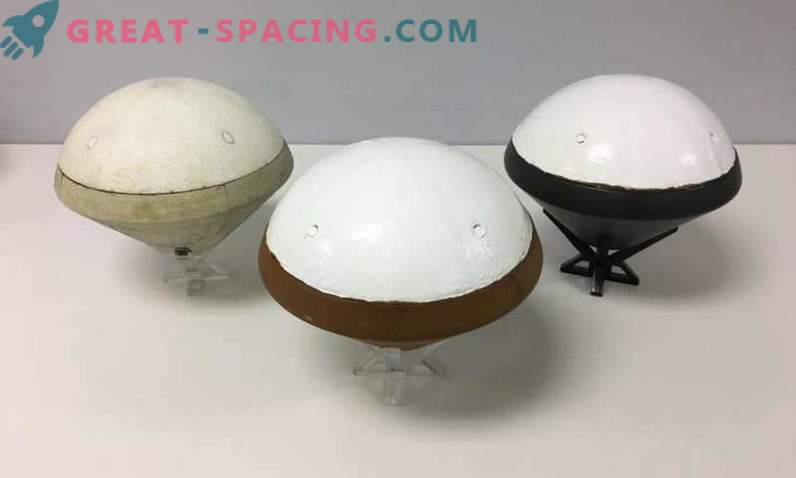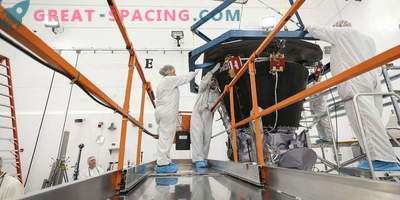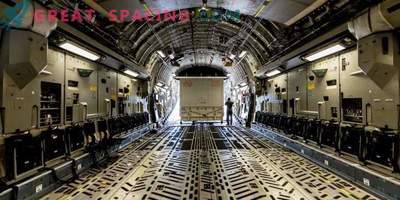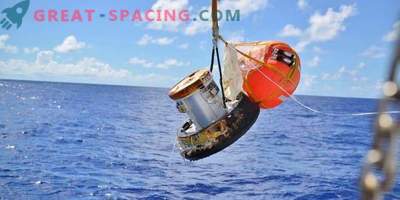
This is an input probe and a metal outer shell that allows the probe to connect to the supply vessel and facilitate its release during the acceleration of the ship.
A group of engineers at NASA is developing a new type of thermal protection system for spacecraft. After success in the laboratory, space tests will follow. The Conformal Thermal Protection Ablation System (CA-TPS) is installed on a probe probe provided by Terminal Velocity Aerospace and launched to the International Space Station on April 18 by an Orbital ATK mission.
The RED Data2 probe is a bit larger than a soccer ball. This is an unmanned research spacecraft, the purpose of which is to transmit information about the environment.
“The purpose of flight tests is to collect data on vehicle acceleration, as well as to demonstrate the effectiveness of a conformal ablative thermal protection system when entering the earth’s atmosphere,” explained project manager Ehthirai Venkatapati. - “Thermal protection is an extremely important element that protects the ship from burning at the entrance.”

Three probes will return during the ship’s collapse and data collection. On the left is the comfortable TPS, in the center is the Orion Avcoat TPS, on the right is the shuttle cylinder.
Test flights will help to project instruments with maximum clarity to secure the entrance to other atmospheres (Venus, Mars or Titan), ”he continued. Venkatapati with the team is developing new materials - conformational PICA (C-PICA) and conformal SIRCA (C-SIRCA), with short impregnations with phenolic carbon and impregnated silicone reusable ceramic ablator.
The probe will be a hard shell coated with TPS and equipped with sensors (thermocouples). To measure the temperature at the time of entry into the atmosphere, these thermocouples are installed on the C-PICA heat shield and the back wall of the C-SIRCA in order to understand how the materials behave in a real situation upon entry.
The Orbital ATK Procurement Service will deliver probes on a freighter to the ISS, where they will wait for the start of the test scheduled for June. Then the cargo ship will enter the earth's atmosphere, release probes that will begin to collect data on thermocouples. If they fall, they will heat up, transmitting data to the Iridium satellite via the antenna. As soon as everything ends, the probe will fall into the ocean without possibility of recovery.
This technology will not only protect space missions, but also pave the way for newcomers, universities and space communities. The ability to predict the flight, and take into account all the risks will help increase the likelihood of success in each mission. If results are positive, C-PICA and C-SIRCA may apply in future programs (for example, New Frontiers or Orion).











































